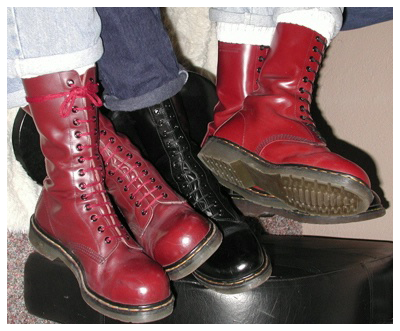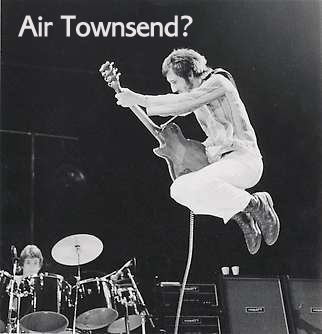It is hard to imagine, but there was a time when there was no recognisable youth culture in Britain. The young may still have felt a little rebellious in the first half of the 20th century and wore more and more daring clothing but changes in fashion moved slowly. The war years saw great austerity and many a young man being sent off to fight. The nation was concentrating its efforts on survival, but in the post war era attitudes had changed and the world of fashion was set for a revolution.
The 1950’s
By the 1950’s the planet was going rock and roll and for the first time a definable youth culture had developed. Young people were striving to differentiate themselves from the older generation and rebellion was in the air. The world of fashion was ready for innovation and a family business in Northampton spotted an opportunity which would produce a style that would become an icon. In the late 1950’s the Griggs family saw an advert in a trade magazine placed by a pair of German Doctors who had invented a new air cushioned sole. This Teutonic duo, Dr.Klaus Märtens and Dr. Herbert Funck had already experienced success with their innovative footwear in Germany, but were now looking for an overseas partner to move things forward.
Dr Märtens had created the boot after injuring his ankle on a skiing trip and found his military footwear too uncomfortable to wear. The boots were being sold as practical work wear for men when the Griggs family adopted the new boots, adapted them, changed the name slightly and then marketed them in the UK. Dr Martens had arrived and were becoming a very popular choice for industrial workers and those who spent all day on their feet but it was a rock star and a new youth culture which would change everything for Dr Martens.
Rock Star
Pete Townsend of legendary group the Who decided to don a pair of the boots on stage in a rebellion against what he saw as the foppish stage fashion of the period. He wanted to underline his affiliation with the working man and to wear practical and functional fashion rather than decorative and flouncy styles. The boots were also adopted by the new Punk movement who had forceful working class ideals and favoured utility wear as their “uniform”.
Youth Culture
Succeeding youth cultures which had vastly different musical tastes but which were all daring to be different adopted Dr Martens in their droves. Punk rockers, glam rockers, Two Tone fans and the children of the Brit Pop age all loved their Dr Martens and the boots became synonymous with rebellious youth for 50 years. Whilst other fashions came and went, Dr Martens boots remained steadfastly cool.
Today
Dr Martens UK experienced unbroken success for the best part of five decades before falling into the doldrums, possible as a result of a 20th century world with few definable youth movements and the resulting decline in the adoption of a uniform. In recent years, though, the brand has seen a big resurgence in popularity as a new generation have fallen in love with these practical but edgy boots. Over the years everyone from rock stars to the Pope have been pictured wearing them and it looks like they are here to stay.
Featured images License: Creative Commons image source
Sally Stacey is a keen blogger who loves Dr Martens and the punk culture of the 1970’s








Are you aware of your Mandela Effect spelling of Townsend? Was it Townsend when you wrote this article? Can you comment on his name being spelled Townshend now?
It’s actually a typo on the writers part and I missed it during edit. I can get behind the berenstein bears Mandela Effect but a lot of them is just bad memory or poor spelling. Human recall is not perfect at recording and tends to fill in the gaps where it needs to. I recently watched a youtube vid with a fella going on about the duracell bunny and how it never existed…he’s simply wrong. The Duracell bunny is a classic trademark case example that is talked about a lot in marketing. I actually discovered this myself about ten years ago living in central america. I would buy duracell batteries and there would be that pink bunny staring at me, eventually I realized this was not energizer but duracell…what gives? Turns out Duracell had the bunny first in the 70’s or early 80’s, it was a one off commercial. In the 80’s Energizer decided to spoof it and in doing so realized Duracell never trademarked the bunny…so they did and exploited the hell out of it! Duracell realized this and quickly bought the trademark for central and south america. Just because some guy doesn’t know this or remember this doesn’t mean it’s the Mandela Effect. LOL, being a life long WHO Fan I remember how Pete’s last name was spelled. I think people are taking this too far, eventually everything will be labeled the Mandela Effect when it’s just poor recall. lol, but thanks for reading! 🙂